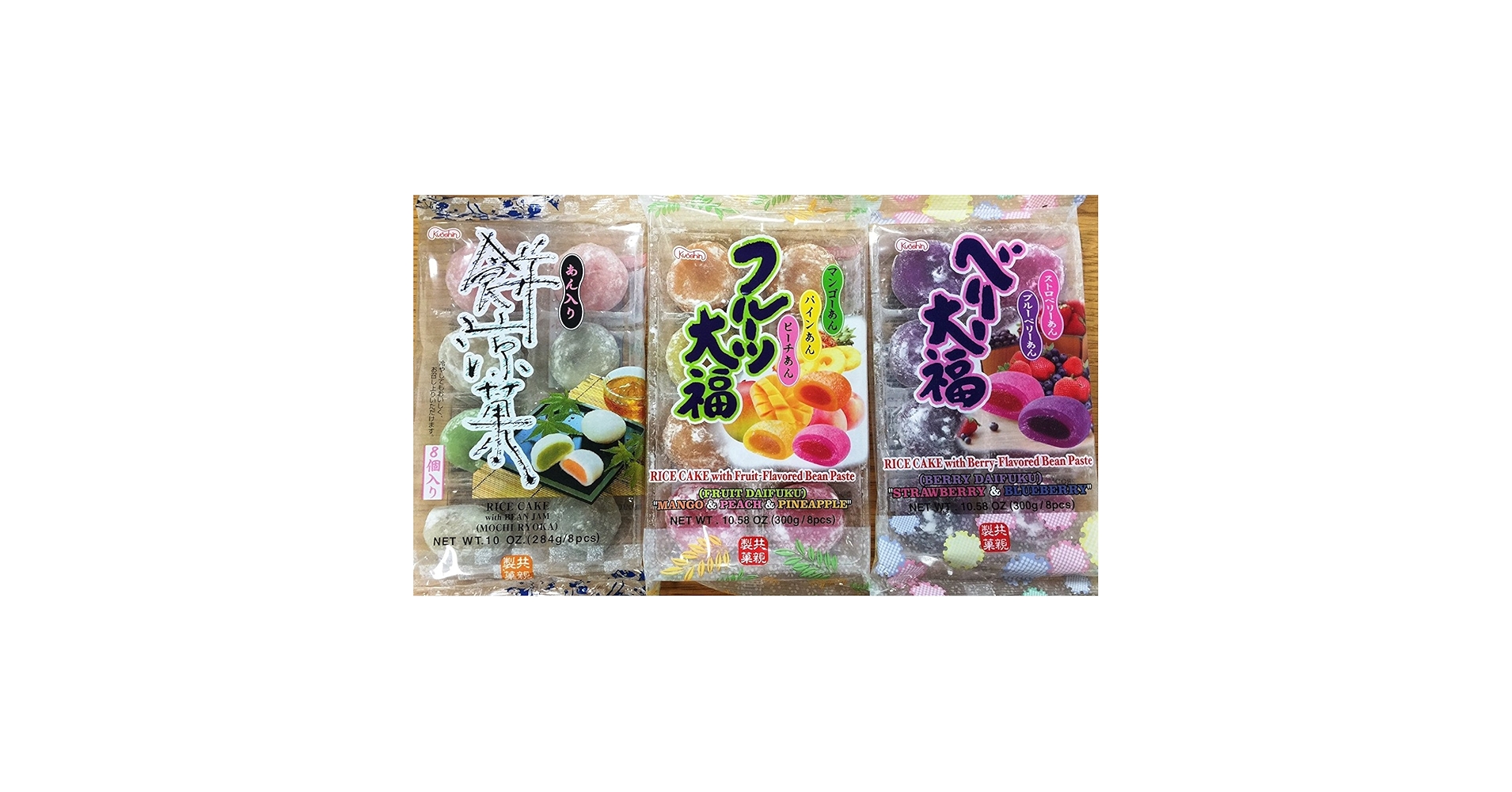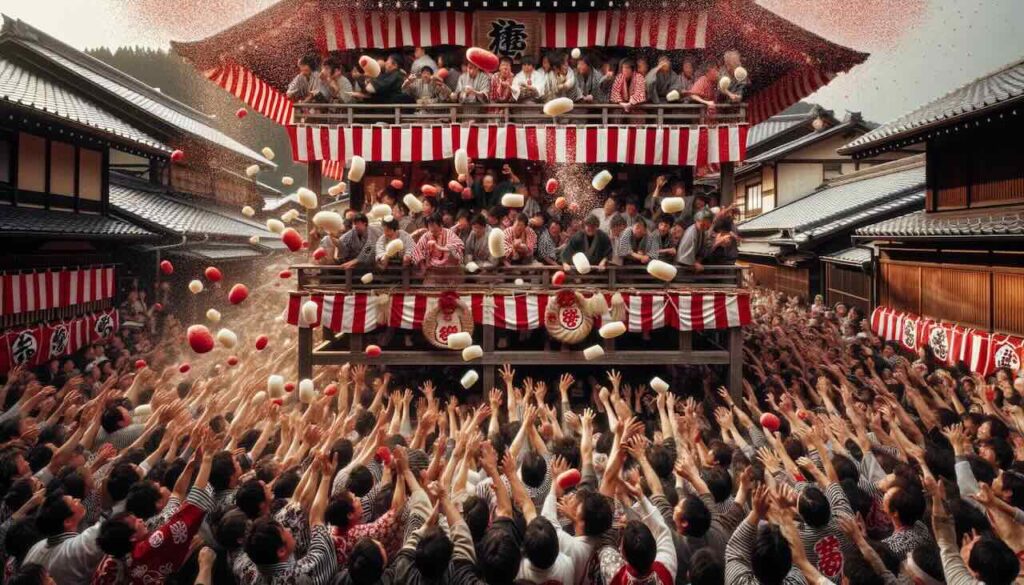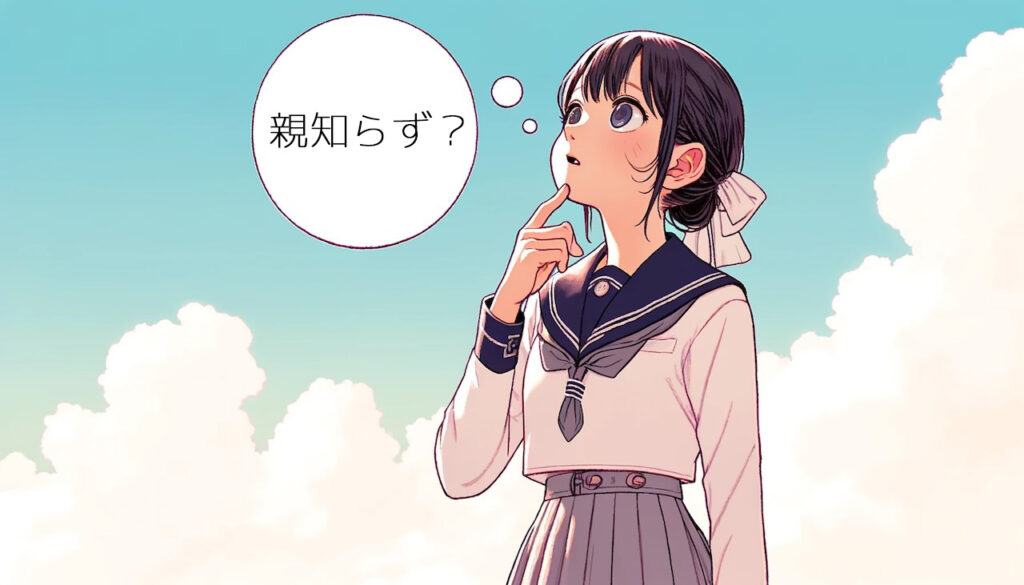Imagine a shower of red and white mochi flying through the air, followed by bursts of laughter and cheers from a crowd reaching out to catch them. This is Mochimaki (餅まき)—a cherished Japanese custom where rice cakes are tossed into the air during celebrations to share blessings and bring good fortune.
Whether performed at a house-raising, wedding, or seasonal festival, Mochimaki blends sacred symbolism with community fun, making it one of Japan’s most vibrant and inclusive traditions.
What Is Mochimaki?
Mochimaki literally means “rice cake throwing.” During the event, red and white mochi (rice cakes) are thrown to gathered guests as a gesture of goodwill. It’s believed that catching mochi brings health, happiness, and prosperity—so everyone joins in with eager hands and joyful energy.
Though it may look playful on the surface, Mochimaki is deeply rooted in religious belief and social tradition.
Why Is Mochi Thrown?
In Shinto and Buddhist traditions, mochi is considered sacred—a food of the gods. It’s frequently offered at shrines and altars as a symbol of spiritual purity, life energy, and divine favor.
By throwing mochi into a crowd, the host is believed to be sharing blessings from the gods, distributing fortune and good luck to everyone present. It’s both an act of generosity and a sacred ritual, wrapped in celebration.
The Symbolism of Red and White Mochi
The use of red and white mochi is intentional and symbolic:
- Red: Represents vitality, joy, and the life-giving energy of the sun
- White: Symbolizes purity, harmony, and sacredness
Together, red and white are the colors of celebration and auspiciousness in Japan—commonly seen at weddings, New Year’s, and other major milestones.
When Is Mochimaki Performed?
Mochimaki appears in many contexts across Japan, always tied to joyful beginnings or moments of community gathering:
🏠 House-Raising Ceremonies (Jōtō-shiki)
Held when the framework of a new home is completed. From the rooftop, builders or homeowners throw mochi to bless the structure and its future residents.
💒 Weddings
Some couples include Mochimaki as part of their reception to thank guests and bless their future together with a joyful, symbolic gesture.
🌸 Setsubun (Seasonal Division)
During this February festival to chase away evil spirits, some temples and homes add mochi to the traditional bean-throwing ritual, enhancing the protective and purifying energy.
🏃 School Sports Days
In a modern twist, schools sometimes hold Mochimaki during events to celebrate student growth and build a sense of shared happiness.
A Look Back: The History of Mochimaki
The roots of Mochimaki stretch back over 1,000 years, to the Heian period (794–1185). At that time, nobles offered mochi to the gods during New Year rituals. Eventually, the practice spread to commoners, and mochi began to be thrown as part of public celebrations.
During the Edo period (1603–1868), a new form of Mochimaki emerged in Kabuki theaters, where actors would throw mochi into the crowd. This became known as “stage Mochimaki”, bringing excitement and connection between performers and audience.
Who Popularized It?
While the exact origin is unclear, the tradition is often linked to legendary Kabuki actor Ichikawa Danjūrō, who used Mochimaki to energize performances and thank audiences, helping establish it as a widespread cultural practice.
Conclusion: A Sweet Symbol of Shared Joy
Mochimaki is much more than a festive game—it’s a ritual that connects people through shared blessings, joy, and cultural memory. Whether on a temple ground or a neighborhood rooftop, the sight of flying mochi brings together generations in a celebration of life’s milestones.
In catching a piece of mochi, you’re not just grabbing a snack—you’re participating in a tradition that carries centuries of meaning and the warm hopes of those around you.



